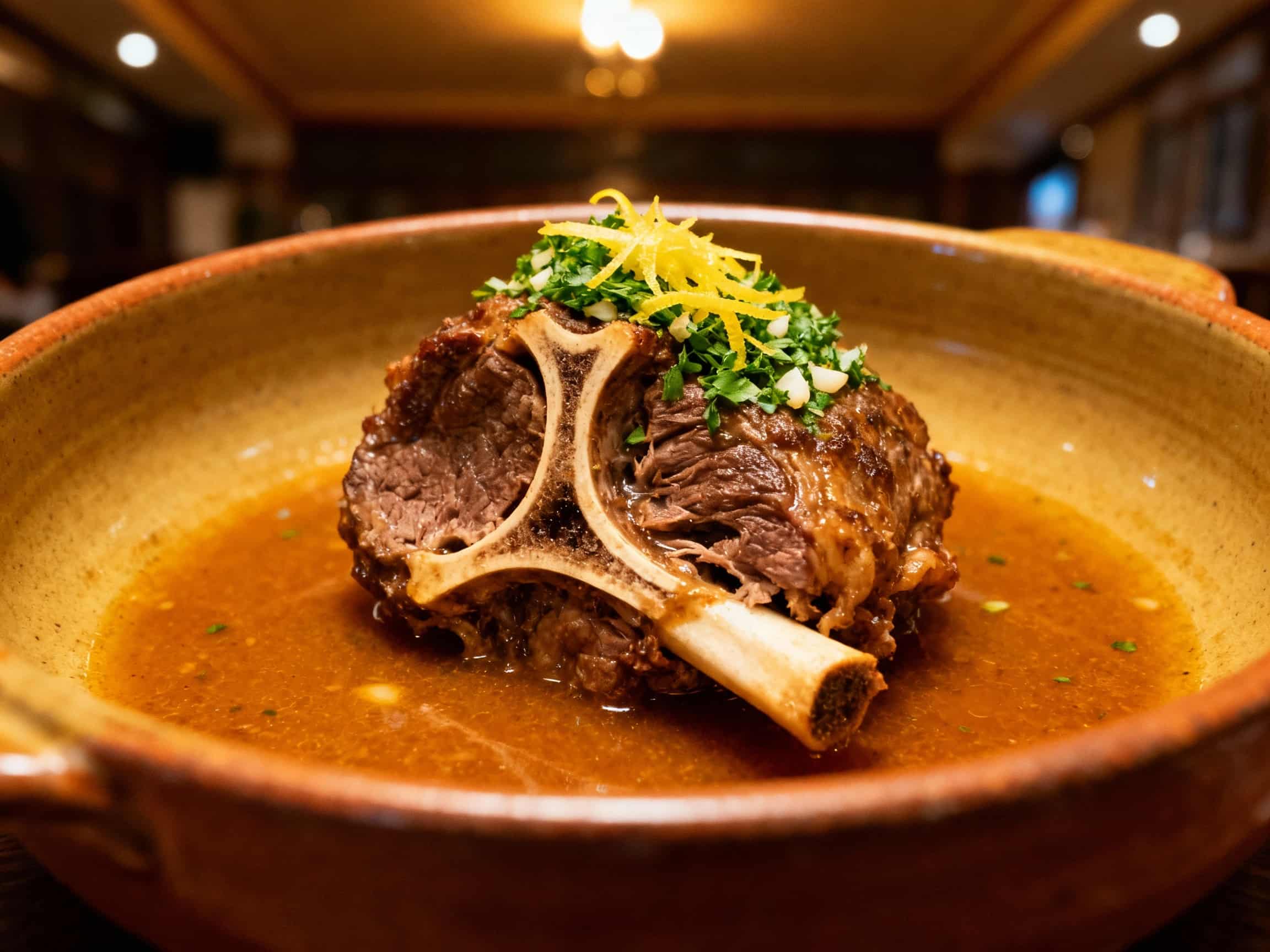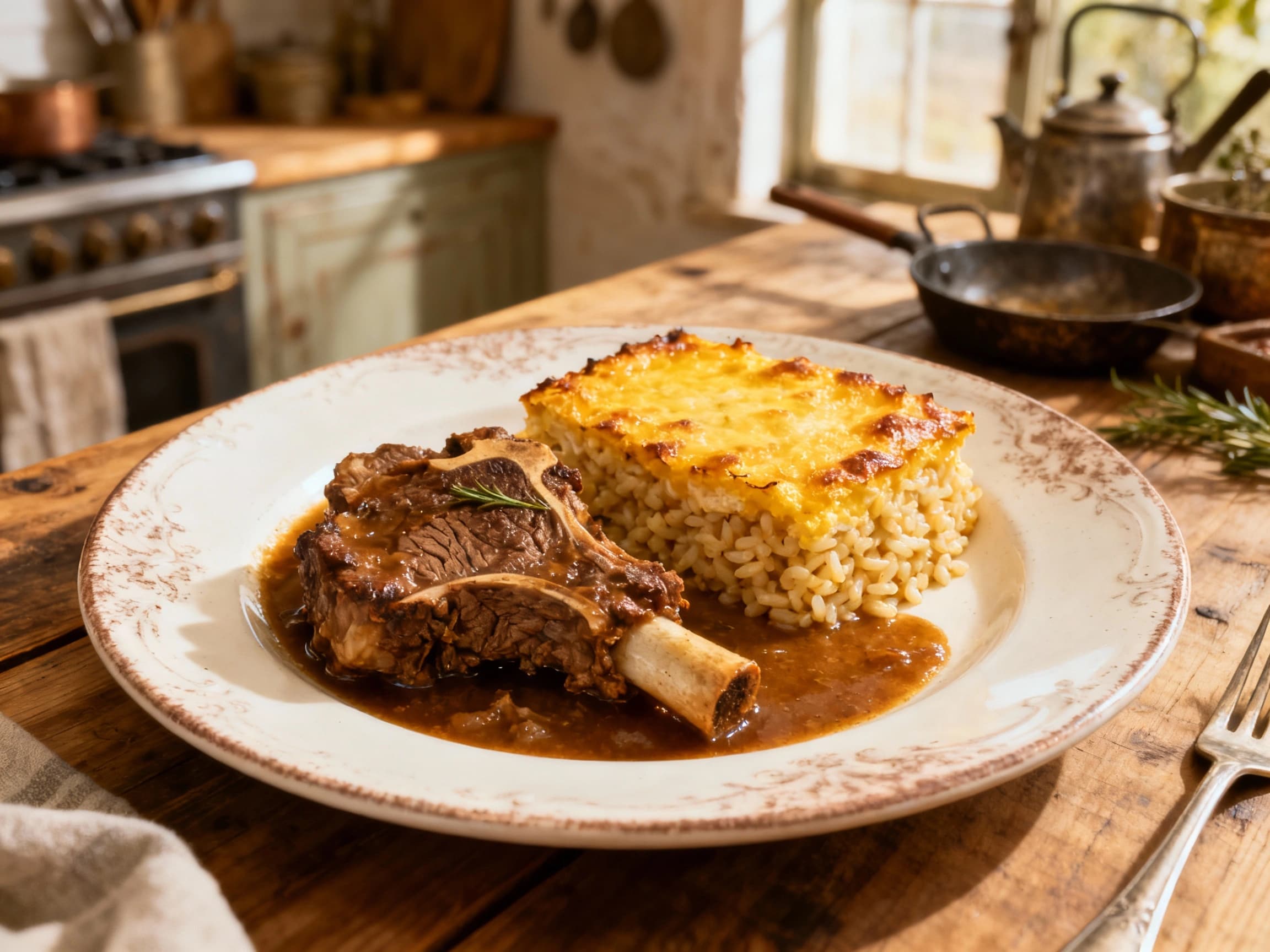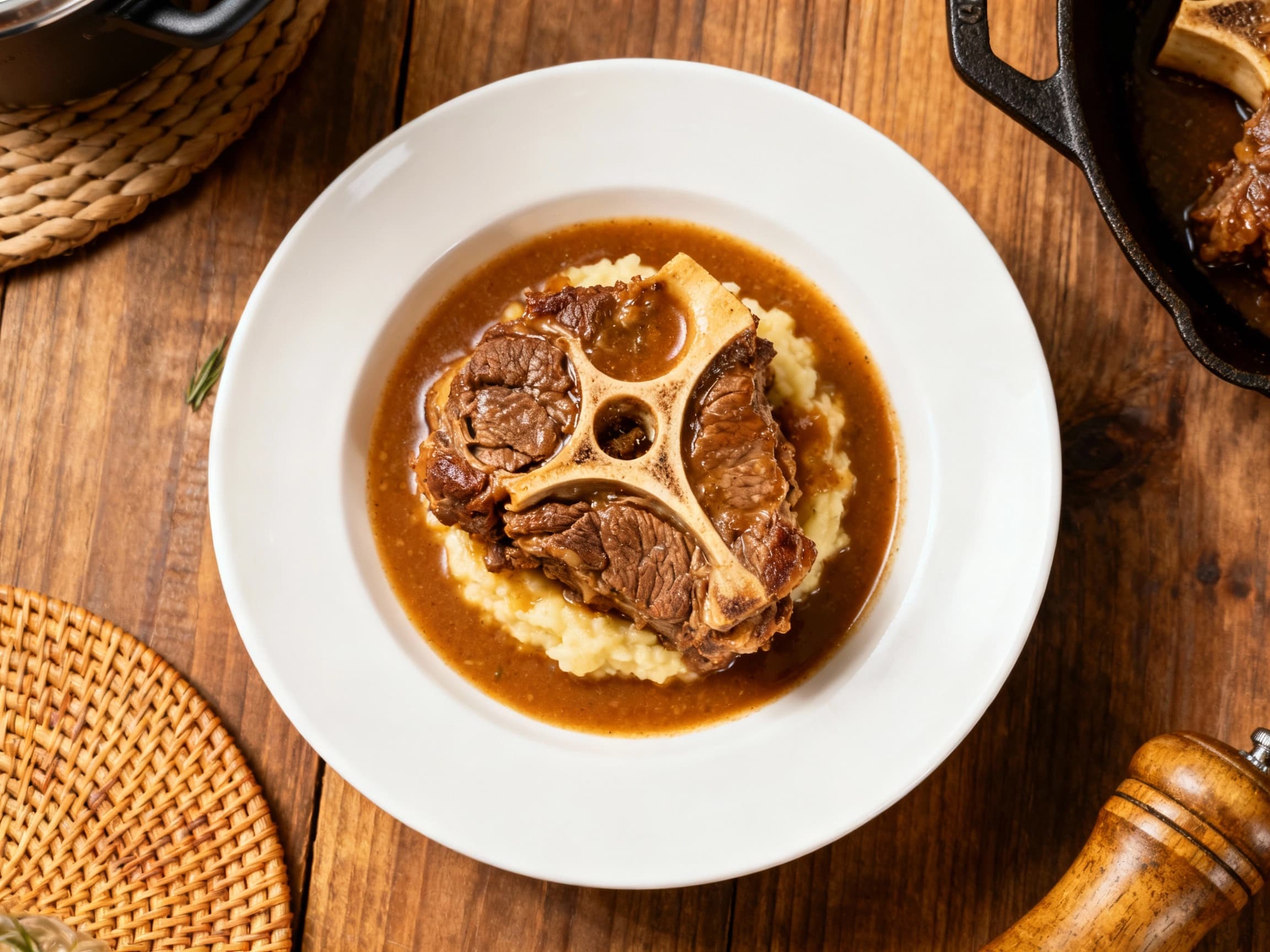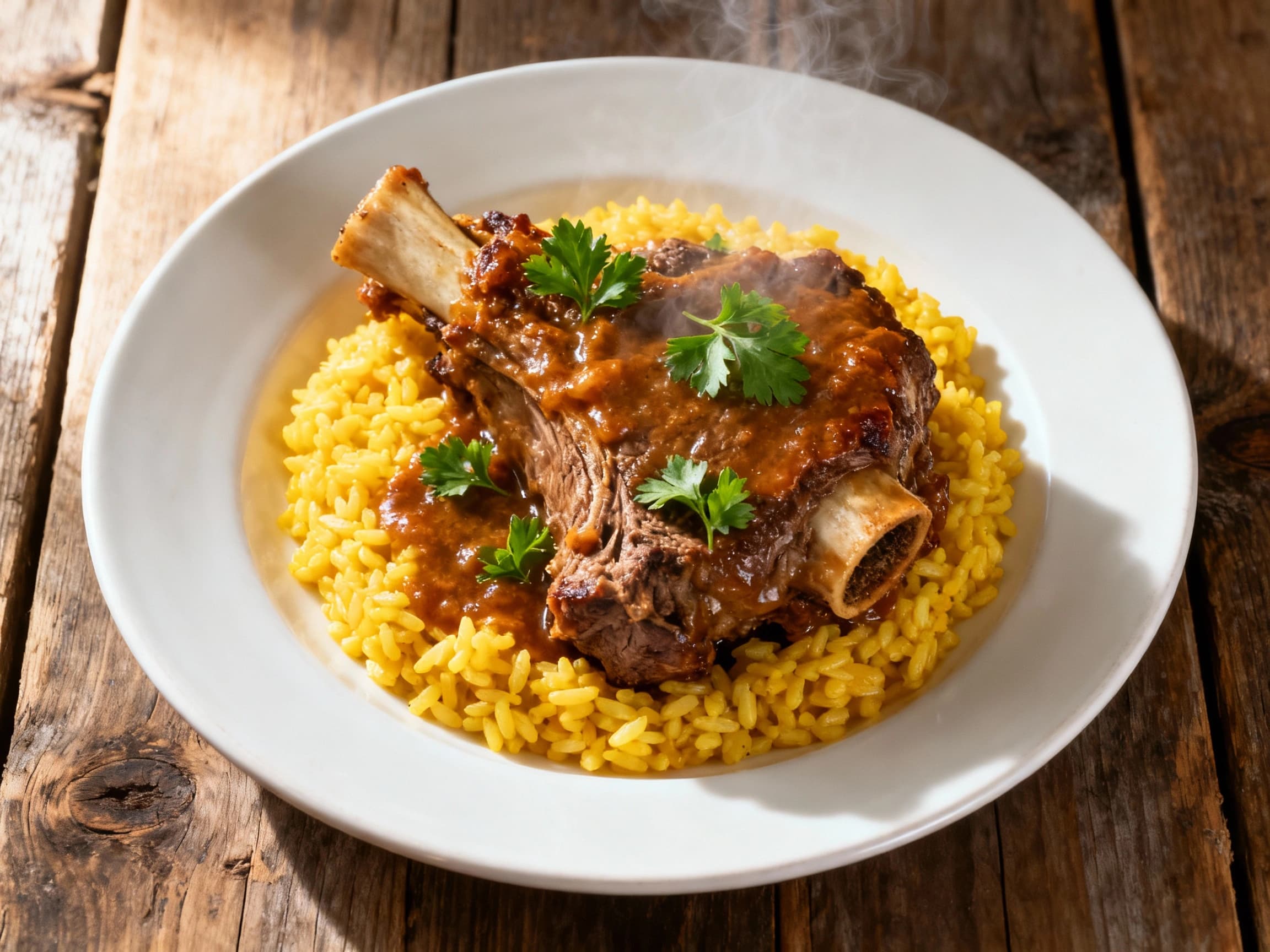
Ossobuco
Ossobuco
- Country
- Italy
- Region
- Lombardy
- Recipes
- 3 Recipes
Dish information
Ossobuco, an emblematic dish from Milan, Lombardy, is a triumph of slow cooking, transforming humble veal shanks into a dish of profound richness and succulence. The name itself, meaning 'bone with a hole,' directly references the cross-cut marrowbone, which is central to the dish's allure; the gelatinous marrow, melting into the sauce, imparts an unparalleled depth of flavor and velvety texture. While the exact historical origins are debated, braised meat dishes have been a staple in the agrarian, cattle-rich region of Lombardy for centuries, evolving from practical peasant fare into a sophisticated culinary masterpiece. The dish typically involves browning the veal shanks, then slow-braising them with vegetables (onions, carrots, celery), white wine, and broth. The traditional Milanese version, 'Ossobuco alla Milanese,' often stands apart by eschewing tomatoes (a common addition in other Italian versions) and being served with a bright, aromatic gremolata—a mixture of finely chopped lemon zest, garlic, and parsley. This fresh garnish cuts through the richness of the meat, adding a vibrant counterpoint. Historically, chefs like Pellegrino Artusi and cookbook authors such as Ada Boni have played significant roles in codifying and popularizing the recipe, ensuring its transmission across generations. Ossobuco symbolizes the Lombard culinary philosophy: utilizing often overlooked cuts and transforming them through patience and skillful technique into an extraordinary dish, often served alongside Risotto alla Milanese to create a truly iconic, indulgent meal. It's a dish that speaks of comfort, history, and the masterful art of extracting maximum flavor from simple, quality ingredients.
Timeline
Early recipes for braised veal shanks, precursors to modern Ossobuco, are documented in Lombardy.
A variation of Ossobuco, possibly the earliest use of the specific term in print, appears in a Milanese cookbook.
Pellegrino Artusi includes a detailed recipe for "Ossobuco alla Milanese" in his influential culinary guide, 'La Scienza in Cucina'.
Ada Boni's seminal cookbook, 'Il Talismano della Felicità', features a widely adopted recipe for Ossobuco, popularizing the dish further.
Ossobuco gains significant international acclaim as a classic of Italian haute cuisine.


